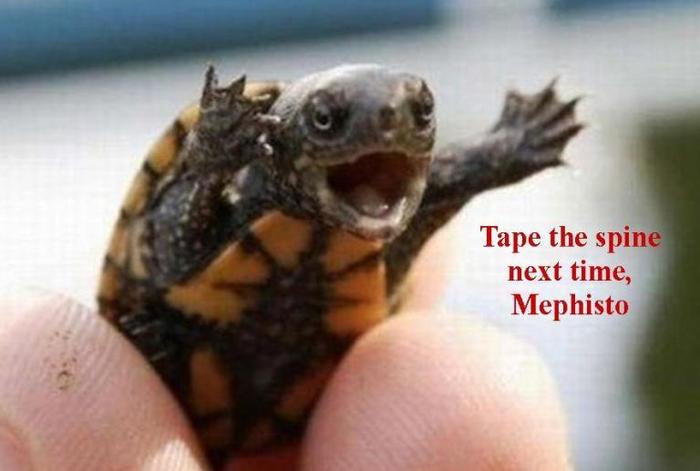Results 1 to 10 of 62
Hybrid View
-
04-29-2013, 07:54 PM #1Junior Member

- Join Date
- Nov 2012
- Posts
- 10
Thanked: 1 Question About Honing - Covering The Spine Sides
Question About Honing - Covering The Spine Sides
Hey Guys - I was excited to get my SR back from honing, only to find out the spine was not covered during the process and the polished edge of the spine sides have been honed. I think it's rather unsightly and ruins the razor IMO! I just don't like it at all. It this typical during the process of honing? I searched on the web and saw that some do tape the spline when honing to prevent this from happening. I wish I would have known about this beforehand, you spend $250 on a SR only to have the polished spine sides honed! Can someone please shed some light on this because I am not too happy about it.
Thanks.
-
04-29-2013, 08:05 PM #2

Some Guys Use Tape And Others Don't. Just Have To Know Who Is Who.
Sorry About Your Bad Luck...
Ed
-
04-29-2013, 08:09 PM #3

I think if you ask for tape to be used or not to be used when honing most people won't mind either way. For razors I use myself I don't like to use tape.
-
04-30-2013, 12:10 AM #4

I am still relatively new to honing and...well...i can put some wear on the spines. To me it is not a big deal. I actually like it. Honestly, when someone sees my razor and says, 'that is a lot of hone wear!', my first reaction is, 'so what, i am still learning. I am going to get some crazy wear on a razor.' However, some folks do not like to see it. I mean the look in there eyes is one of chastisement. If I want chastisement I would go to my bishop. Anyway......
Viva La Honewear!!!
However, if you wanna use tape, go for it!!! It is your money and your stuff!!!!From their stillness came their non-action...Doing-nothing was accompanied by the feeling of satisfaction, anxieties and troubles find no place
-
04-30-2013, 12:26 AM #5Senior Member


- Join Date
- Jan 2011
- Location
- Roseville,Kali
- Posts
- 10,432
Thanked: 2027
-
-
04-30-2013, 12:45 AM #6
-
The Following User Says Thank You to Hirlau For This Useful Post:
Mephisto (04-30-2013)
-
04-29-2013, 08:33 PM #7


- Join Date
- May 2005
- Location
- St. Louis, Missouri, United States
- Posts
- 8,454
- Blog Entries
- 2
Thanked: 4942
Bad Luck???
When someone doesn't ask for the spines to be tape, those of us who don't tape, don't tape. You would have to microscopically measure the difference in wear from a factory honing and a follow up honing unless you are a new guy honing who really flattens a spine out to see any difference.
This is normally not an issue beyond an individual's OCD.
Have fun.
-
The Following User Says Thank You to Lynn For This Useful Post:
Disburden (05-01-2013)
-
04-29-2013, 10:36 PM #8

[QUOTE=Lynn;1150935]Bad Luck???
When someone doesn't ask for the spines to be tape, those of us who don't tape, don't tape. You would have to microscopically measure the difference in wear from a factory honing and a follow up honing unless you are a new guy honing who really flattens a spine out to see any difference.
This is normally not an issue beyond an individual's OCD.
Hey Lynn,
Chief Honemeister
Honed more than 50000 razors in over 15 years
Sounds like OCD to me...
StingrayI tape everything!!
-
04-29-2013, 10:57 PM #9


- Join Date
- May 2005
- Location
- St. Louis, Missouri, United States
- Posts
- 8,454
- Blog Entries
- 2
Thanked: 4942
Last edited by Lynn; 04-29-2013 at 10:59 PM.
-
04-29-2013, 11:01 PM #10

[QUOTE=Lynn;1150993]Thanks for the laugh!!
That would be more an occupation however........................Honing is what I do 4-6 hours a day. I may not know as much as you, but I try hard......
Have fun.
I was kidding of course. (I am sure you know that)
StingrayI tape everything!!


 105Likes
105Likes LinkBack URL
LinkBack URL About LinkBacks
About LinkBacks


















